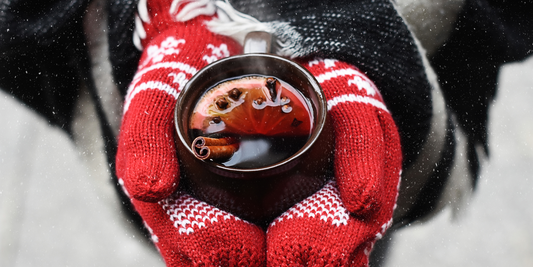
Wounds - small injuries, great importance
Wounds are part of life. Whether when cutting with the kitchen knife or after a fall on the sidewalk - we have all experienced them. But did you know that there are different types of wounds? In this article we immerse yourself in the topic of wound care in everyday life and we start with a fundamental introduction to the fascinating and significant area of wound healing. You will learn to understand how the body reacts to injuries and how you can help that wounds heal optimally. Regardless of whether you already have experience with wounds or not, this information will help you to better ensure your health and your loved ones. So let's immerse yourself and learn more about the world of wounds.
Acute wounds: When the body reacts at lightning speedAcute wounds usually arise suddenly and are often caused by a sharp object or an accident. This includes cuts, abrasions and burns. The body reacts quickly and efficiently to heal the wound in this type of injuries. We explain to you how you recognize acute wounds and provide the best first aid.
There are different types of acute wounds that can be distinguished depending on the cause and appearance.
Here are some of the most common types of acute wounds:Section wounds: These are created by sharp objects such as knives, glass or razor blades and often have a clean, straight edge.
Wounds: Wounds occur when the skin is rubbed off on a surface. They are often painful and can contain dirt and foreign bodies.
Laceration: Latin is deep, often gaping wounds caused by blunt trauma such as blows or falls. You can cause heavy bleeding.
Brand wounds: Burns result from heat, liquids or chemical effects on the skin. They are often categorized according to their degree of depth, from superficial burns to severe burns.
Stab wounds: Stab wounds are often caused by pointed objects such as needles, nails or spines. You can lie deeper in the tissue and require a precise examination.
It is important to note that the treatment and maintenance of an acute wound depends on its kind and severity. In the event of severe or deep wounds, it is advisable to take medical help immediately, while smaller wounds can often be treated at home. The right first aid measure and the proper cleaning and covering of the wound are crucial to prevent infections and promote healing.
Chronic wounds: lengthy challengesA chronic wound is a lengthy and difficult to heal injury, which usually needs more than 4 to 12 weeks to heal. In contrast to acute wounds that are healed by a quick reaction of the body, the treatment of chronic wounds is a challenge, since they are often deeper and can be hindered by various factors. The most common causes of chronic wounds include circulatory disorders, diabetes, venous insufficiency and pressure ulcers.
The support of the healing of chronic wounds requires careful care and the observance of some important steps:
Medical assessment: The first step in the treatment of a chronic wound is to take a comprehensive medical assessment by a doctor or a wound specialist. The exact identification of the wound type and the determination of the underlying cause are crucial for the success of the treatment.
Infection control: Chronic wounds are susceptible to infections. It is therefore important to carefully clean the wound and to pay attention to signs of infection such as reddening, swelling, pus formation or increased pain. If the infection signs, medical help should be used immediately.
Moist wound healing: In contrast to the old assumption that wounds should be kept dry, wet wound healing is often recommended today. This means keeping the wound moist with special supply material to support the tissue, to regenerate optimally.
Print relief: In the case of pressure ulcers, the relief of the pressure on the affected area is crucial. This means shifting the position or weight to prevent further pressure on the wound.
Nutrition and hydration: A balanced diet with sufficient protein and vitamin intake is important to support wound healing. In addition, sufficient hydration is crucial to support the body in the tissue repair.
Management of underlying diseases: If the chronic wound is caused by an underlying health problem such as diabetes or circulatory disorders, the control and management of these diseases is essential to promote healing.
Regular monitoring: Chronic wounds require regular monitoring and care. This means that you should inspect the wound daily to identify changes or signs of an infection at an early stage.
Healing chronic wounds can often take weeks to months and requires patience and endurance. Cooperation with a medical specialist or a nurse who specializes in wound care can ensure the best results. Compliance with the recommended care routines and observing the instructions of your health expert are crucial to support the healing and prevent possible complications.
The right wound care in everyday lifeProper care of everyday wounds: explained step by step
Small accidents happened quickly. A paper that cuts, a careless moment when cutting vegetables or stumbling while jogging - you already have a small wound. But how do you properly provide them to prevent infections and scars?
1. Let the wound bleed briefly
That may sound contrary, but a slight bleeding can help to rinse dirt and bacteria from the wound. Do not press the wound, but let them bleed by themselves for a few seconds.
2. Disinfect hands
Before you treat the wound further, it is important to thoroughly disinfect your hands. This prevents bacteria from getting into the wound from your hands. With deeper cuts or if you are not sure, put on disposable gloves.
3. Rinse the wound
Carefully rinse the wound with clear water. In this way, dirt and any foreign bodies are removed. Avoid soaps or other cleaning agents because you can irritate the wound.
4. Remove foreign bodies
Sometimes small stones or splinters can get stuck in the wound. You can carefully remove them with clean tweezers.
If you cannot remove the foreign bodies or sit too deep, please see a doctor!
5. Disinfect wound
Now it is time to disinfect the wound. Special are suitable for this Wound disinfectantas they are recommended. They kill bacteria and protect against infections.
6. Cover wound
Protect the wound from further contamination and friction by covering them with a sterile pavement or a wound base. This keeps the wound clean and promotes the healing process.
Conclusion
Small wounds can lead to more serious problems if they are not treated properly. With the right procedure and the high -quality products from Altruan.de, however, you can make sure that your wound heals quickly and without complications. Be careful and act carefully to protect your health!




















